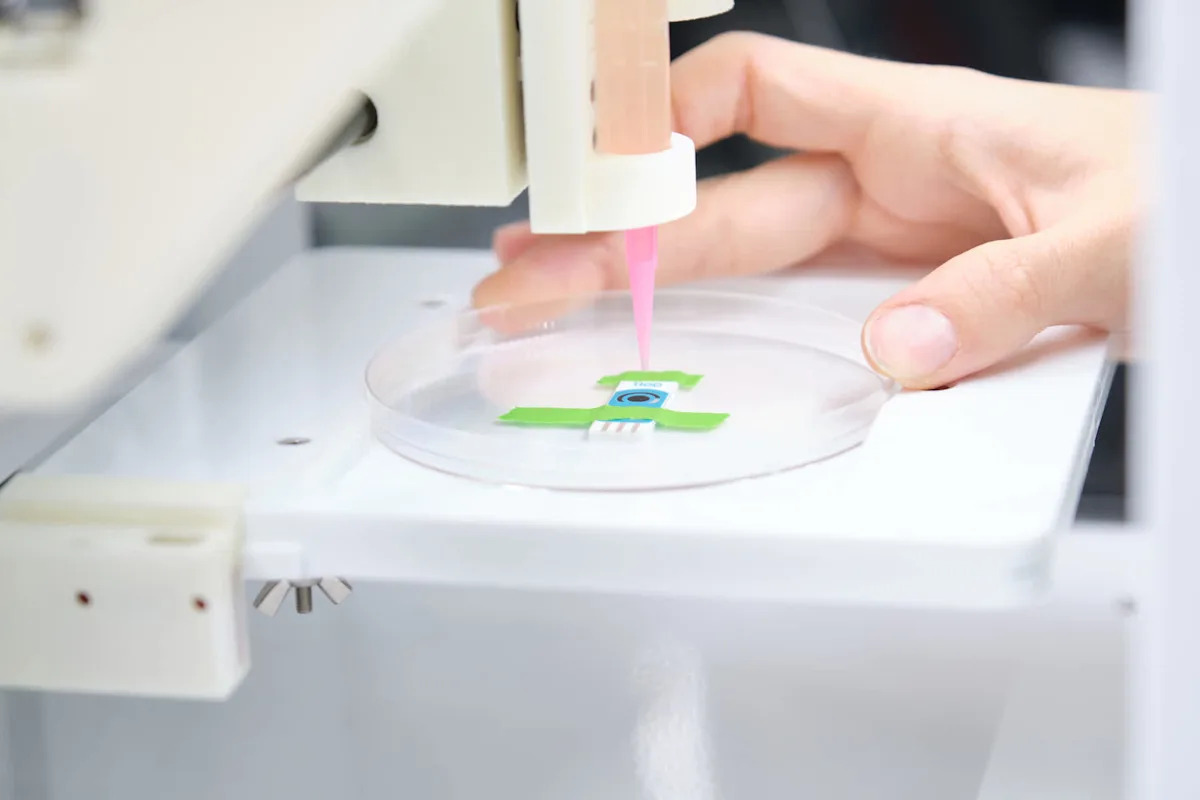A breakthrough in tissue modeling could be a game-changer for both patients and the planet, offering a way to reduce the use of lab plastics and other synthetic materials.
In 2019, scientists at Carnegie Mellon University developed a technique called FRESH — or freeform reversible embedding of suspended hydrogels — to 3D-print living tissues using collagen. As SciTechDaily explains, collagen is “the most abundant protein in the human body” and provides “essential structure and support to nearly all tissues and organs.”
In simple terms, the method enables researchers to print soft, delicate materials — including collagen and living cells — within hydrogel without damaging them. This allows for the creation of lab-grown tissue structures that are both biologically accurate and highly functional.
Recently, the team used this method to create the first-ever microphysiologic system made entirely from collagen. The researchers hope the lab-built tissue models could one day help treat conditions such as Type 1 diabetes, which happens when the body stops producing insulin in the pancreas.
With this method, researchers could grow miniature pancreatic tissues that function like the real thing, offering a new way to study the disease, test treatments, or even develop transplantable tissue that helps patients produce insulin again.
“Now, we can build microfluidic systems in the Petri dish entirely out of collagen, cells, and other proteins, with unprecedented structural resolution and fidelity,” Adam Feinberg, a professor of biomedical engineering and materials science and engineering at Carnegie Mellon, said in a statement. “Most importantly, these models are fully biologic, which means cells function better.”
Watch now: Is this common bathroom item making you sick?
Beyond the medical potential, the innovation could lower the use of plastics in research and modeling. And that has perks for both patients and the planet.
Traditional lab research often relies on plastic-based scaffolds, molds, and containers to test cells in the lab. Most of these plastics are single-use and non-recyclable because of contamination, typically ending up in landfills or incinerators. By enabling the construction of fully biological tissue systems, the FRESH method reduces the need for plastic supports.
If collagen-based tissue modeling leads to viable transplantable tissue, it could one day help treat — or even cure — conditions such as Type 1 diabetes. This would not only improve patient health but also reduce reliance on long-term plastic-based medical devices, including insulin pumps and synthetic implants.
This shift away from plastic materials marks a major improvement for both research and patient care. As the researchers explain, a major limitation of existing tissue models is that they’re made from artificial materials that don’t mimic natural tissue. This limits their usefulness in drug development and therapy testing. But with new collagen modeling, scientists can conduct more accurate biological testing, improving research accuracy and speed.
“Going forward, the question is not, ‘Can we build it?’” Feinberg said in a statement. “It’s more of, ‘What do we build?’”
Join our free newsletter for weekly updates on the latest innovations improving our lives and shaping our future, and don’t miss this cool list of easy ways to help yourself while helping the planet.
